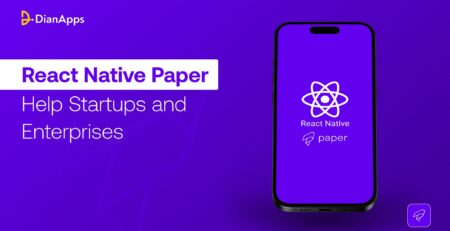How Will Android 10 Features Impact Your Mobile Application?
Android 10 is here and so are Android 11, Android 12, and Android 13. But why is there a supreme charm for Android 10? This can drive us to many possible aspects that users might be thrilled to know about. Here in this blog, we are going cover to the top Android 10 features that have majorly impacted mobile applications. And what scope does it unveils to the future of Android app development? So without any further ado let’s get started.
The Current Global Market of Mobile Apps
The worldwide mobile application market was worth USD 187.58 billion in 2021, and it is expected to increase at a CAGR of 13.4 percent from 2022 to 2030. The study’s scope includes applications for gaming, mobile health and fitness, music and entertainment, social networking, retail and e-commerce, and other reasons.
Smartphone ubiquity, increased internet usage, and the incorporation of technology such as artificial intelligence and machine learning into mobile app development services all indicate a future rise in demand for mobile applications (apps). Furthermore, the programs mentioned above are often downloaded via app distribution websites such as the Google Play Store and the App Store for iOS.
Top Android 10 Features Impacting Your Mobile Application
With Android 10, you can create fantastic app experiences for customers by using the latest hardware and software improvements.
1. Foldables
Android 10 expands multitasking across app windows and supports screen consistency to save your app state while the device folds or unfolds, building on robust multi-window support. Android 10 enhances onResume and onPause to allow multi-resume and inform your app when it has attention.
It also modifies the behavior of the resizable activity manifest parameter, allowing you to choose how your app appears on foldable and big displays. In Android Studio, you may configure a foldable emulator as a network drive (AVD) to assist you in developing foldable devices.
2. 5G wireless networks
Android 10 introduces platform support for 5G and expands existing APIs to enable you to make use of these changes. 5G wireless networks are transforming mobile communication with higher bandwidth and lower latency.
You may use connectivity APIs to determine whether the device has a high bandwidth connection and whether it is metered. With them, your applications and games can provide consumers with rich, immersive experiences via 5G.
3. Notifications using Smart Reply
On-device ML is used in Android 10 notifications to recommend contextual actions, such as smart answers for messages or launching a map for a location in the notification. Your applications can use this capability straight now, without you having to do anything.
Smart answers and actions supplied by the system are automatically included in notifications. You can still provide your personal responses and activities if you choose.
4. Dark Theme
Android 10 has a system-wide dark theme appropriate for low-light environments and helps preserve battery life. By heading to Settings or turning on Battery Saver, users may enable a new system-wide dark theme. This darkens the system UI and activates the dark theme in applications that support it.
You may design a bespoke dark theme for your app or use the new Force Dark functionality, which allows the system to produce a dark version of your existing theme dynamically. You may also wish to use App Compat’s DayNight functionality to provide a dark look for customers running older versions of Android.
5. Gesture Navigation
Gesture navigation allows apps to take up the entire screen for content.
Android 10 offers a completely gestural navigation mode, which removes the navigation bar area and allows apps to use the entire screen to provide richer, more immersive experiences. It keeps the conventional Back, Home, and Recents navigation buttons but replaces them with edge swipes rather than visible buttons.
To create an immersive experience, go edge-to-edge, sketching beneath the navigation bar to merge smoothly with gesture navigation. Android app developers should utilize the setSystemUiVisibility() API to lay out fullscreen, and then handle WindowInsets as needed to ensure that key UI elements are not covered.
6. Panels of Configuration
Through a new Settings Panel API, you can now display critical system settings directly in the context of your app. A settings panel is a floating user interface that displays options that users may require, such as internet connectivity, NFC, and audio volume.
A website development service, for example, may provide a window with connectivity options such as Airplane Mode, Wi-Fi (including neighboring networks), and Mobile Data. Simply fire an intent with one of the new Settings. Panel actions to display a settings panel.
7. Protecting location data in network scans
The majority of network scanning APIs currently need coarse location permission. Android 10 strengthens the security of certain APIs by demanding fine location permission instead.
8. Preventing Device Tracking
Apps can no longer access non-resettable device identifiers that may be exploited for trackings, such as device IMEI, serial number, and similar identifiers. When connected to Wi-Fi networks, the device’s MAC address is also randomized by default.
9. Biometrics have been improved.
The Biometric Prompt architecture in Android 10 is extended to allow passive authentication techniques such as the face, as well as implicit and explicit authentication processes. During authentication, the user must explicitly confirm the transaction in the TEE in the explicit flow. The explicit flow is intended to provide a lighter-weight option for transactions requiring passive verification. When device credentials are required, Android 10 improves the fallback. A mobile app developer can help you get started with the latest Android 10 seamlessly.
10. NDK
Android 10 tightens limits on the usage of shared objects with text migrations. Apps that use linked objects with text relocations are at risk of breaking. As a consequence, an app’s code must be loaded in its whole, which enhances both the application’s security and its load speeds.
Also read: Top Mobile App Ideas and Latest Trends for the Healthcare Industry
Over to you
With the release of the latest version of Google’s Android operating system, enterprises will need to upgrade their apps to better match the behavior changes and capabilities that Android 10 provides. And take advantage of the app development company that is proficient and aware of the emerging technologies and trends.
To leverage the most of this unfamiliar setting, enterprises must conduct extensive quality assurance campaigns to eradicate any defects or abnormalities that might impede functionality, weaken an app’s reliability or compatibility, lead to security vulnerabilities, and so on.
We are a mobile app development company providing full-fledged android app development services to multinational and national companies. Our strategies are curated keeping in mind each and every business aspect. However, if you have a new idea that can become the new internet sensation then we are confident to skyrocket your business project exuberantly.




